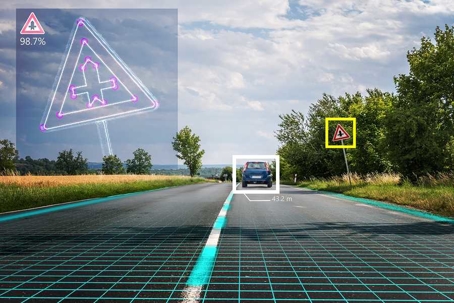Can I Take Legal Action After An Accident With A Self-Driving Vehicle?
Thousands of car accidents are caused by distracted driving, judgment errors, driver inexperience, and drowsiness every year. All of these causes are considered forms of driver error, which accounts for about 94% of all traffic accidents. Because driver errors are responsible for most traffic accidents, many people believe that the streets would be a lot safer with self-driving vehicles. It sounds logical, but is it really true?
Self-driving vehicles may reduce the number of accidents that occur due to driver error, but the technology that is used to operate these vehicles is not perfect. In fact, even though there are very few self-driving vehicles on the roads right now, crashes involving these cars are still making headlines left and right.
Despite their flaws, self-driving vehicles are expected to grow in popularity over the next several years. As these vehicles start appearing on the roads in larger numbers, it’s important for every driver to learn about their rights when they are involved in an accident with a self-driving car. Here’s what you need to know:
How is Fault Determined in Traditional Car Accident Cases?
Before learning about accidents involving self-driving vehicles, it’s important to understand how personal injury cases involving traditional cars work. After a typical car accident, the victim will need to prove that someone else was to blame for the crash in order to recover compensation. The “someone else” is usually the other driver, but it can also be other parties involved in the accident. Fault is usually proven with evidence such as witness testimony, pictures from the scene of the crash, medical records, police reports, and surveillance footage. If it is proven that the other driver is at fault, their insurance company is responsible for compensating the victim for their injuries.
As previously mentioned, the other driver is typically held liable in car accident cases involving standard cars. But, what happens when you are hit by a self-driving vehicle?
Personal Injury Cases Involving Self-Driving Vehicle Accidents
Proving liability in a self-driving vehicle accident is rather complex. This is mainly because there are several parties that could be held liable for the victim’s injuries. The first potentially liable party is the person who is sitting in the driver’s seat of the self-driving vehicle. Even though these cars are known as “self-driving,” there still needs to be someone sitting in the driver’s seat. This person is supposed to keep an eye on the road and take control of the car in emergency situations. If the driver does not fulfill this obligation, it is possible that they could be held liable in the event of an accident. In this situation, the personal injury case would be fairly similar to a case involving standard cars.
Let’s consider an example. Self-driving vehicles are supposed to automatically apply the brakes whenever they detect a pedestrian or bicyclist in their path. But, if this system fails, the person in the driver’s seat is supposed to manually apply the brakes to prevent a collision. If the driver fails to take action to prevent an accident, they can be held liable for the victim’s injuries.
The issue of liability is even more complicated when the self-driving vehicle is owned by an organization instead of an individual. If the driver was employed with the company and working at the time of the accident, the company can be held liable for their employee’s failure to prevent the accident. This is due to the respondeat superior legal doctrine, which states that employers are liable for the negligence of their employees.
Another party that is potentially liable after a self-driving vehicle accident is the manufacturer of the car. Product liability laws state that manufacturers are liable for injuries that occur as a result of a product defect. Consider the example used above. The car’s system should have detected the pedestrian or bicyclist in the car’s path, but it didn’t, and an accident occurred as a result of this failure. In this case, the manufacturer could be liable for the victim’s injuries since they created a system that failed to work as it was intended.
These are just a few examples of the many parties that could be held liable after an accident with a self-driving vehicle. The truth is that determining liability in these accidents is not easy–and it’s even harder to recover compensation for your injuries. For these reasons, it is imperative to work with an experienced personal injury attorney instead of attempting to handle the case on your own.
What Victims Should Expect in the Future
The self-driving technology is still fairly new, and self-driving vehicles are just starting to hit the roads now. Because of this, there are still countless legal questions that need to be answered regarding liability in self-driving vehicle accidents. It’s important for lawmakers to address these issues as soon as possible so people that are injured in self-driving vehicle accidents do not need to spend years fighting for the compensation that they deserve.
Legal experts currently believe that other drivers, employers, and manufacturers will be held liable for accidents involving self-driving vehicles. However, these are assumptions that are made based on the current negligence laws. It is possible that other parties could be held liable in the future as new legislation is passed.
Have you been involved in an accident with a self-driving vehicle? If you’ve suffered injuries as a result of the crash, contact Carpenter & Zuckerman as soon as possible to discuss your case. Let our experienced personal injury attorneys review the details of your self-driving vehicle case during a free consultation. Then, let us fight tirelessly to recover the maximum amount of compensation for your medical expenses, lost wages, and pain and suffering.

